Input interpretation

diethylene glycol
Chemical names and formulas

formula | C_4H_10O_3 name | diethylene glycol IUPAC name | 2-(2-hydroxyethoxy)ethanol alternate names | 2, 2'-oxydiethanol | bis(2-hydroxyethyl)ether | diglycol | digol | ethylene diglycol mass fractions | C (carbon) 45.3% | H (hydrogen) 9.5% | O (oxygen) 45.2%
Lewis structure
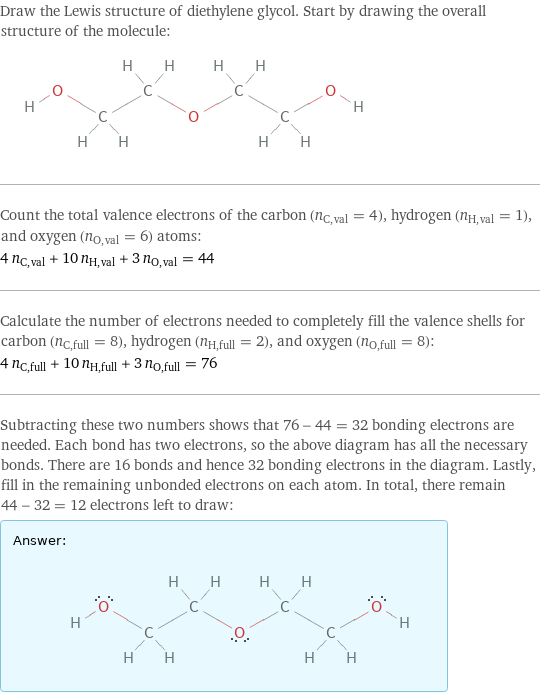
Draw the Lewis structure of diethylene glycol. Start by drawing the overall structure of the molecule: Count the total valence electrons of the carbon (n_C, val = 4), hydrogen (n_H, val = 1), and oxygen (n_O, val = 6) atoms: 4 n_C, val + 10 n_H, val + 3 n_O, val = 44 Calculate the number of electrons needed to completely fill the valence shells for carbon (n_C, full = 8), hydrogen (n_H, full = 2), and oxygen (n_O, full = 8): 4 n_C, full + 10 n_H, full + 3 n_O, full = 76 Subtracting these two numbers shows that 76 - 44 = 32 bonding electrons are needed. Each bond has two electrons, so the above diagram has all the necessary bonds. There are 16 bonds and hence 32 bonding electrons in the diagram. Lastly, fill in the remaining unbonded electrons on each atom. In total, there remain 44 - 32 = 12 electrons left to draw: Answer: | |
3D structure
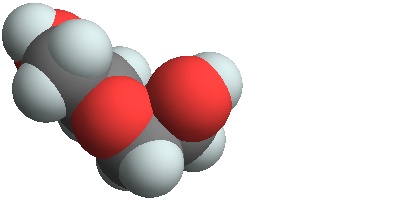
3D structure
Basic properties
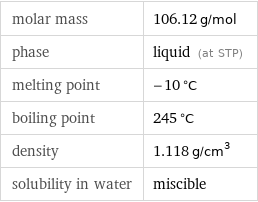
molar mass | 106.12 g/mol phase | liquid (at STP) melting point | -10 °C boiling point | 245 °C density | 1.118 g/cm^3 solubility in water | miscible
Units

Liquid properties (at STP)
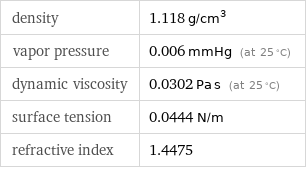
density | 1.118 g/cm^3 vapor pressure | 0.006 mmHg (at 25 °C) dynamic viscosity | 0.0302 Pa s (at 25 °C) surface tension | 0.0444 N/m refractive index | 1.4475
Units

Thermodynamic properties
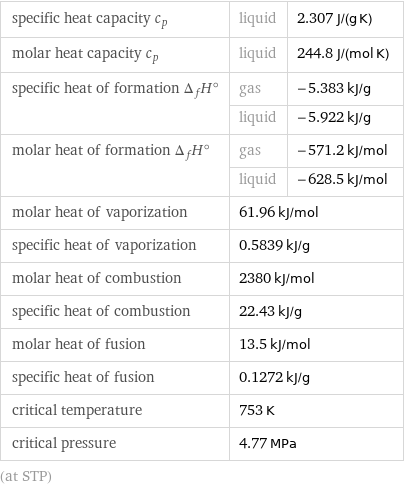
specific heat capacity c_p | liquid | 2.307 J/(g K) molar heat capacity c_p | liquid | 244.8 J/(mol K) specific heat of formation Δ_fH° | gas | -5.383 kJ/g | liquid | -5.922 kJ/g molar heat of formation Δ_fH° | gas | -571.2 kJ/mol | liquid | -628.5 kJ/mol molar heat of vaporization | 61.96 kJ/mol | specific heat of vaporization | 0.5839 kJ/g | molar heat of combustion | 2380 kJ/mol | specific heat of combustion | 22.43 kJ/g | molar heat of fusion | 13.5 kJ/mol | specific heat of fusion | 0.1272 kJ/g | critical temperature | 753 K | critical pressure | 4.77 MPa | (at STP)
Chemical identifiers
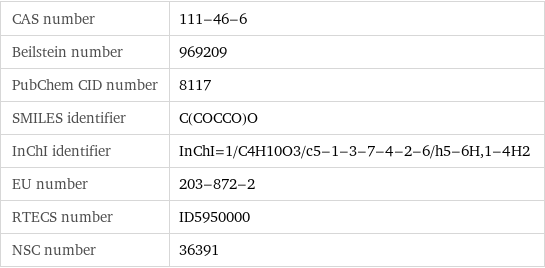
CAS number | 111-46-6 Beilstein number | 969209 PubChem CID number | 8117 SMILES identifier | C(COCCO)O InChI identifier | InChI=1/C4H10O3/c5-1-3-7-4-2-6/h5-6H, 1-4H2 EU number | 203-872-2 RTECS number | ID5950000 NSC number | 36391
NFPA label

NFPA label

NFPA health rating | 1 NFPA fire rating | 1 NFPA reactivity rating | 0
Safety properties
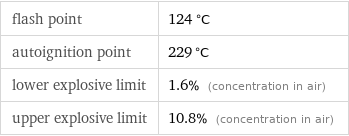
flash point | 124 °C autoignition point | 229 °C lower explosive limit | 1.6% (concentration in air) upper explosive limit | 10.8% (concentration in air)
Toxicity properties

odor | odorless